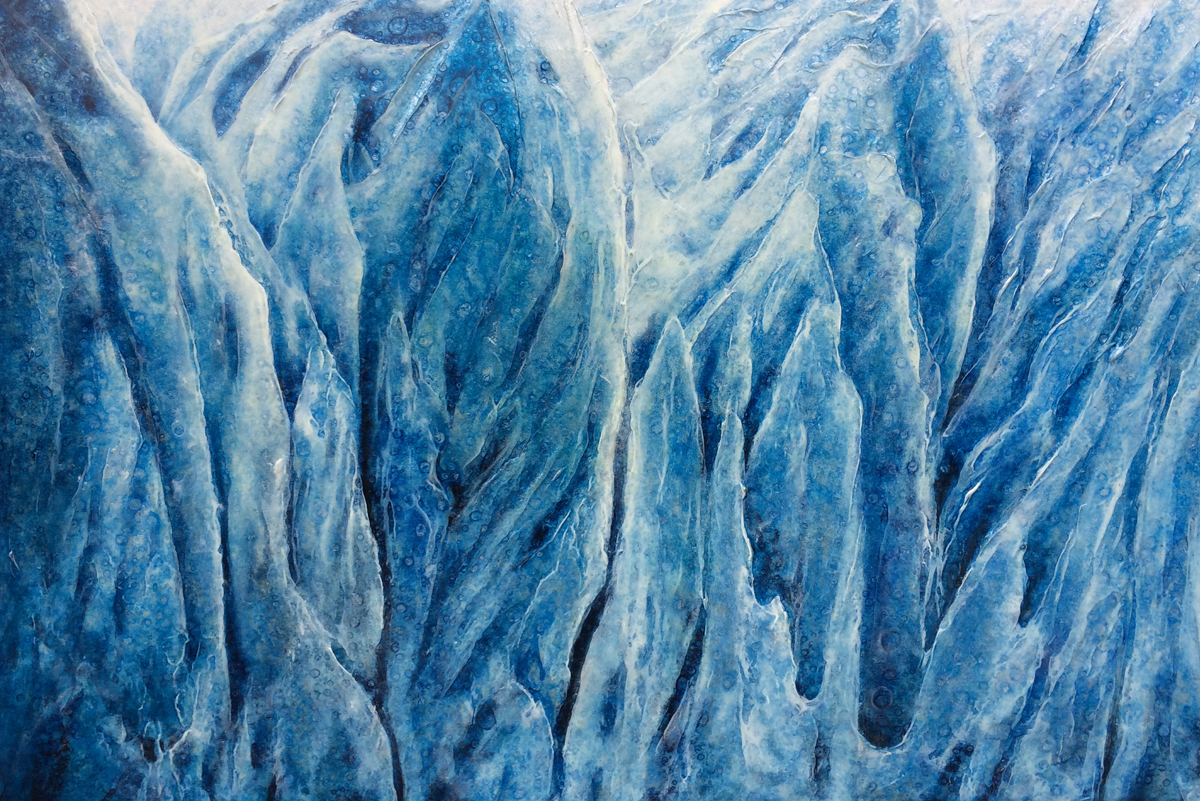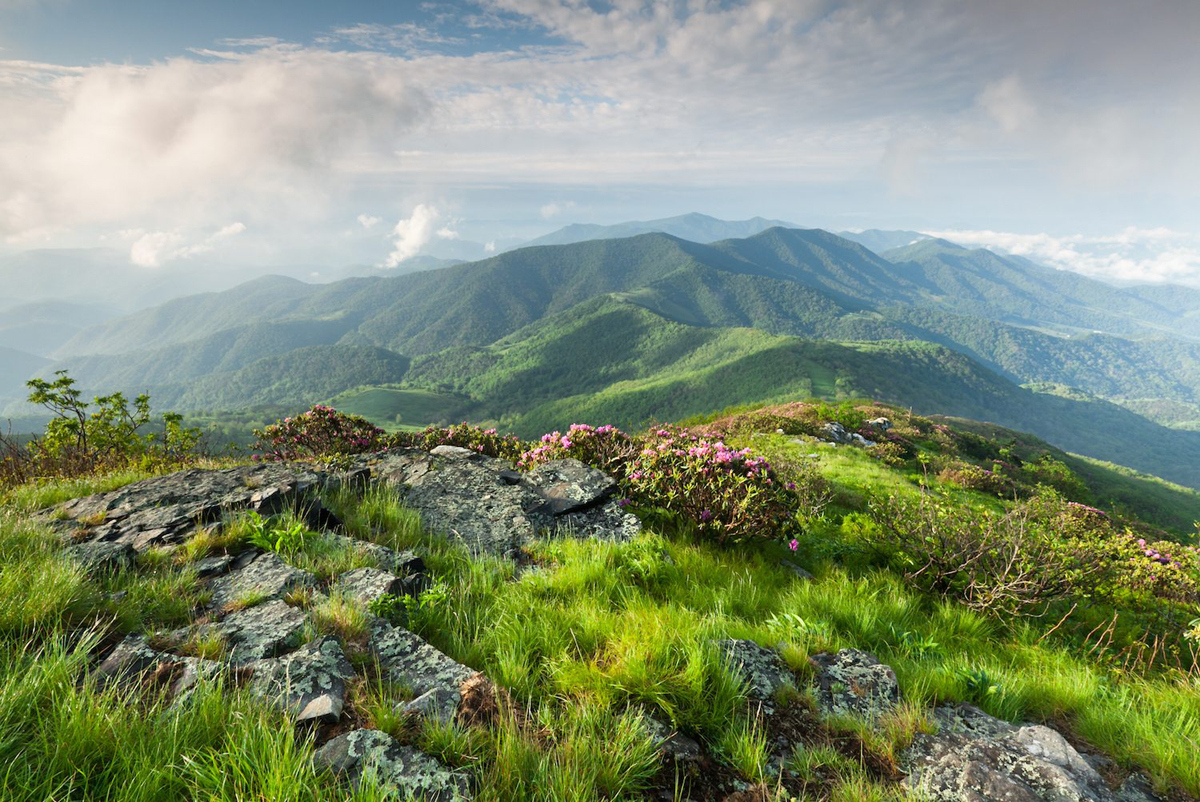As I stated in an earlier blog, I was recently asked “How do you make a living as a full-time artist?” And honestly, I wake up every morning absolutely baffled that I CAN make a living doing what I love doing.
I work here in the mountains of western North Carolina in the town of Asheville, and largely because of that, I do not do art shows or art festivals. I really don’t go anywhere, because I can't afford to leave my studio. Basically, I walk to work in Asheville’s River Arts District, unlock the door, turn the lights on, stick the “OPEN” flag out on the side of the building and then I start painting, and people (some locals but mostly tourists) come through my door and look at my artwork and by far, most of my sales come from people who walk in off the street. They are visiting Asheville, heard about the River Arts District and they want to make sure they check that off their “to do when visiting Asheville” list. If I lived practically anywhere else, this business model would not work at all. But because there are now about 220 artists within about one square mile who do this, and who go together on advertising to get the word out, people know about us and they visit (and purchase art!)
If I didn't have this business model available to me as a real option, I'd probably be in trouble.
So the fact that I can make this business model work is largely due to where I live. But the details as to how the situation in Asheville makes my life as a full-time artist possible -- I don't see why that can't be replicated anywhere else. I really hope it can. There's nothing magical about Asheville (although some locals explain that Asheville is special because of giant crystals under the city. Ground penetrating radar has never detected said crystals, but I digress...
If I didn't have this business model available to me as a real option, I'd probably be in trouble. Most other full-time artists around the country that I know get their work into as many galleries and art festivals as possible. I truly have all the respect in the world for artists who travel from art festival to art festival and have their work in select and profitable galleries and who make a living that way. I cannot compete with them. I mean, I have found a few galleries that now carry and sell my work but honestly, I make most of my own sales from my Asheville studio. I would love to find more galleries around the country that would represent me, but I honestly don't know how to find them, so I unfortunately cannot be much of a help with any of that.
But because I live where I live, I am literally "piggybacking" off the momentum every other artist here has created. It's symbiotic. Visiting artists have asked "is there even ROOM for another artist here?" and my answer is always "YES!" because it's like gravity -- the more the mass, the more the gravitational pull (i.e. more visitors recognize us as an arts destination) and that's a really good thing for all of us artists.
The other thing the artists do is to have "regular open hours"
Why is Asheville so special? Well, for one thing, it is a tourist destination in and of itself, and that REALLY helps bring people into the area. And here, the artists are working together and they are operating their business like a business. Let me explain.
First of all, most artists all rent studio space in the same part of town (not all scattered through the city). The artists have an organization they pay dues to and they (the River Arts District Artists) advertise and promote what's going on here. We have a printed studio guide with a map of where all the studios are, to make it easy for people.
The other thing the artists do (well, enough of them anyway) is to have "regular open hours". I have my hours posted in our studio guide we pass out and on my studio door...10:00 - 5:00 every day but Sunday. So my studio is not just where I paint. I do paint here, but the public walks through my door every day, watch me paint, and they look at my finished artwork hanging on the wall. So it's kind of a cross between a messy studio and a classy art gallery that's open to the public. THAT is what I (and lots of other artists here) do. And honestly, the only people I hear around me in the arts district that complain about not making sales are those who can only be here now and then. I totally get it that not everyone can or wants to do this full-time, but if you want to make a living with this more "retail" type art business model, you have to be open. In other words: You cannot sell your artwork if your studio is locked up and dark.
Let me illustrate this point with a true story. I was driving through an un-named state a couple years ago and saw a sign "historic arts district" and I thought "Oh COOL! Let's take a few minutes and explore!" So we did. My wife and I found the arts district and were really impressed with the concept. Turns out that the downtown area of this town was dwindling and the city wanted to re-vamp the area. So they sold studio space to several artists for SUPER cheap and even gave $10K per studio for upgrades and interior design. And artists moved in! But when my wife and I were there (on a Friday), we spent an hour walking around the arts district and only one studio was actually open. If someone opens a hardware store or lighting store or barber shop or coffee shop on Main Street, they would have been there. They would be open. There is probably something I'm missing, but as a visitor, I didn't see how having closed art studios was helping to create a vibrant new downtown. I'll never go back. Not because the town wasn't cool (it was), but because it was a ghost town.
So my suggestion would be that you move to Asheville (I know artists who have done just that for all the above reasons I've mentioned). But more realistically, I really think that wherever you live, you could try to get artists around you working together (in as close a proximity as possible). You could pool monetary resourses and advertise. Get the word out that you're there. Let the chamber of commerce and tourism office know you're there. And BE IN THE STUDIO with lights on and door open and OPEN flag out front so people are invited in. That's what we do here and I know it works.













